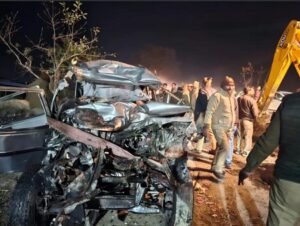Webster’s Dictionary defines a model
Webster’s Dictionary defines a model as “a simplified description of a complex entity or process” such as a “computer model” of the circulatory and respiratory systems. The term comes from the Latin root modus, which means “a manner of doing or being; a method, form, fashion, custom, way, or style.” More specifically, the word “model” is derived from the Latin modulus, which essentially means a “small” version of the original mode. A “model” of an object, for example, is typically a miniature version or representation of that object. A “working model” (such as that of a machine) is something which can do on a small scale the work which the machine itself does, or expected to do.
The notion of a “model” has also come to mean “a description or analogy used to help visualize something (as an atom) that cannot be directly observed.” It can also be used to indicate “a system of postulates, data, and inferences presented as a formal description of an entity or state of affairs.”
Thus, a miniature train, a map of the location of key train stations, or a train schedule, are all examples of different possible types of models of a railway system. Their purpose is to emulate some aspect of the actual railway system and provide useful information to better manage interactions with respect to that system. A miniature train set, for instance, may be used to assess the performance of a train under certain physical conditions; a map of key train stations can help to plan the most effective itinerary to reach a particular city; a train schedule may be used to determine the timing required for a particular journey. From this perspective, the fundamental value of any type of model is its usefulness.
Overview of Modeling in NLP
Behavior modeling involves observing and mapping the successful processes which underlie an exceptional performance of some type. It is the process of taking a complex event or series of events and breaking it into small enough chunks so that it can be recapitulated in some way. The purpose of behavior modeling is to create a pragmatic map or ‘model’ of that behavior which can be used to reproduce or simulate some aspect of that performance by anyone who is motivated to do so. The goal of the behavior modeling process is to identify the essential elements of thought and action required to produce the desired response or outcome. As opposed to providing purely correlative or statistical data, a ‘model’ of a particular behavior must provide a description of what is necessary to actually achieve a similar result.
The field of Neuro-Linguistic Programming has developed out of the modeling of human behaviors and thinking processes. NLP modeling procedures involve finding out about how the brain (“Neuro”) is operating, by analyzing language patterns (“Linguistic”) and non-verbal communication. The results of this analysis are then put into step-by-step strategies or programs (“Programming”) that may be used to transfer the skill to other people and content areas.
In fact, NLP began when Richard Bandler and John Grinder modeled patterns of language and behavior from the works of Fritz Perls (the founder of Gestalt therapy), Virginia Satir (a founder of family therapy and systemic therapy) and Milton H. Erickson, M.D. (founder of the American Society of Clinical Hypnosis). The first ‘techniques’ of NLP were derived from key verbal and non-verbal patterns Grinder and Bandler observed in the behavior of these exceptional therapists. The implication of the title of their first book, The Structure of Magic (1975), was that what seemed magical and unexplainable often had a deeper structure that, when illuminated, could be understood, communicated and put into practice by people other than the few exceptional ‘wizards’ who had initially performed the ‘magic’. NLP is the process by which the relevant pieces of these people’s behavior was discovered and then organized into a working model.
NLP has developed techniques and distinctions with which to identify and describe patterns of people’s verbal and non-verbal behavior that is, key aspects of what people say and what they do. The basic objectives of NLP are to model special or exceptional abilities and help make them transferable to others. The purpose of this kind of modeling is to put what has been observed and described into action in a way that is productive and enriching.
The modeling tools of NLP allow us to identify specific, reproducible patterns in the language and behavior of effective role models. While most NLP analysis is done by actually watching and listening to the role model in action, much valuable information can be gleaned from written records as well.
The objective of the NLP modeling process is not to end up with the one ‘right’ or ‘true’ description of a particular person’s thinking process, but rather to make an instrumental map that allows us to apply the strategies that we have modeled in some useful way. An ‘instrumental map’ is one that allows us to act more effectively the ‘accuracy’ or ‘reality’ of the map is less important than its ‘usefulness’. Thus, the instrumental application of the behaviors or cognitive strategies modeled from a particular individual or group of individuals involves putting them into structures that allow us to use them for some practical purpose. This purpose may be similar to or different from that for which the model initially used them.
For instance, some common applications of modeling include:
Understanding something better by developing more ‘meta-cognition’ about the processes which underlie it – in order to be able to teach about it, for example, or use it as a type of “benchmarking.”
Repeating or refining a performance (such as in a sport or a managerial situation) by specifying the steps followed by expert performers or during optimal examples of the activity. This is the essence of the ‘business process reengineering’ movement in organizations.
Achieving a specific result (such as effective spelling or the treatment of phobias or allergies). Rather than modeling a single individual, this is often accomplished by developing ‘techniques’ based on modeling a number of different successful examples or cases.
Extracting and/or formalizing a process in order to apply it to a different content or context. For example, an effective strategy for managing a sports team may be applied to managing a business, and vice versa. In a way the development of the ‘scientific method’ has come from this type of process, where strategies of observation and analysis that were developed for one area of study (such as physics) have been applied to other areas (such as biology).
Deriving an inspiration for something which is loosely based on the actual process of the model. Sir Arthur Conan Doyle’s portrayal of Sherlock Holmes which was based on the diagnostic methods of his medical school professor Joseph Bell is a good example of this.
Deep Structure and Surface Structure
NLP draws many of its principles and distinctions from the field of transformational grammar (Chomsky 1957, 1965) as a means to create models of people’s verbal behavior. One of the essential principles of transformational grammar is that tangible behaviors, expressions, and reactions are ‘surface structures’ which are the result of bringing ‘deeper structures’ into reality.
This is another way of saying that the models we make of the world around us with our brains and our language are not the world itself but representations of it. One important implication of the principles of transformational grammar is that there are multiple levels of successively deeper structures in the structure and organization within any coding system. An important implication of this, with respect to modeling, is that it may be necessary to explore various levels of deep structure, behind a particular performance, in order to produce an effective model of it. Furthermore, different surface structures may be reflections of common deep structures._For effective modeling, it is frequently important to examine multiple examples of surface structures in order to better know or identify the deeper structure which produces it.
Another way to think about the relationship between deep structure and surface structure is the distinction between “process” and “product.” Products are the surface level expressions of the deeper and less tangible generative processes which are their source. Thus, “deep structures” are latent potentials that become manifest in concrete surface structures as a result of a set of transformations. This process includes the selective destruction as well as the selective construction of data.
In this regard, one of the fundamental challenges of modeling comes from the fact that the movement between deep structure and surface structure is subject to the processes of generalization, deletion and distortion. That is, some information is necessarily lost or distorted in the transformation from deep structure to surface structure. In language, for example, these processes occur during the translation of deep structure (the mental images, sounds, feelings and other sensory representations that are stored in our nervous systems) to surface structure (the words, signs and symbols we choose to describe or represent our primary sensory experience). No verbal description is able to completely or acccurately represent the idea it is attempting to express.
The aspects of deep structure which become manifest, are those for which enough missing links (deletions, generalizations, distortions) have been filled in that the potential latent at the level of deep structure is able to complete the series of transformations necessary to become manifest as surface structure. One of the goals of the modeling process is to identify a complete enough set of transforms so that an appropriate and useful expression of the deep structure may be attained. M
Modeling Capabilities
The focus of most NLP modeling processes is at the level of capabilities, the how to level. Capabilities connect beliefs and values to specific behaviors. Without the how, knowing what one is supposed to do, and even why to do it, is largely ineffective. Capabilities and skills provide the links and leverage to manifest our identity, values and beliefs as actions in a particular environment.
The fact that NLP modeling procedures tend to focus on capabilities, by the way, does not mean they only consider that level of information. Often, a gestalt of beliefs, values, sense of self, and specific behaviors are essential to produce the desired capability. NLP maintains that, by focusing on developing capabilities, the most practical and useful combinations of “deep structure” and “surface structure” will be produced.
It is important to keep in mind that capabilities are a deeper structure than specific tasks or precedures. Procedures are typically a sequence of actions or steps that lead to the accomplishment of a particular task. Skills and capabilities, however, are frequently “non-linear” in their application. A particular skill or capability (such as the ability to think creatively, or to communicate effectively) may serve as a support for many different kinds of tasks, situations and contexts. Capabilities must be able to be “randomly accessed,” in that the individual must be able to immediately call upon different skills at different times in a particular task, situation or context. Instead of a linear sequence of steps, skills are thus organized around a T.O.T.E. – a feedback loop between a) goals b) the choice of means used to accomplish those goals and c) the evidence used to assess progress towards the goals.
According to NLP, in order to effectively model a particular skill or performance we must identify each of the key elements of the T.O.T.E. related to that skill or performance:
The performer’s goals.
The evidence and evidence procedures used by the performer(s) to determine progress toward the goal.
The sets of choices used by the performer(s) to get to the goal and the specific behaviors used to implement these choices.
The way the performer(s) respond(s) if the goal is not initially achieved.
Levels of Complexity of Skills and Capabilities
It should be kept in mind that capabilities themselves are of different natures and levels of complexity. Some skills and capabilities are, in fact, made up of other skills and capabilities. The ability to “write a book” is made up the abilites relating to the vocabulary, grammar, and spelling of the language in which one is writing, as well as knowledge relating to the subject one is writing the book about. These are often referred to as “nested T.O.T.E.s,” “sub-loops,” or “sub-skills,” because they relate to the smaller chunks out of which more sophisticated or complex skills are built. The capability of “leadership,” for example, is made up of many sub-skills, such as those relating to effective communication, establishing rapport, problem solving, systemic thinking, and so on.
Thus, the modeling process itself may be directes toward different levels of complexity with respect to a particular skills and capabilities.
Simple Behavioral skills would involve specific, concrete, easily observable actions that take place within short periods of time (seconds to minutes). Examples of simple behavioral skills would include: making a particular dance move, getting into a special state, shooting a basket, aiming a rifle, etc.
Simple Cognitive skills would be specific, easily identifyable and testable mental processes which occur within a short period of time (seconds to minutes). Examples of simple cognitive skills would be: remembering names, spelling, acquiring simple vocabulary, creating a mental image, etc. These types of thinking skills produce easily observable behavioral results that can be measured, and provide immediate feedback.
Simple Linguistic skills would involve the recognition and use of specific key words, phrases and questions, such as: asking specific questions, recognizing and responding to key words, reviewing or ‘backtracking’ key phrases, etc. Again, the performance of these skills is easily observable and measurable.
Complex Behavioral (or Interactive) skills involve the construction and coordination of sequences or combinations of simple behavioral actions. Abilities such as juggling, learning a martial art technique, successfully executing a play in a particular sport, making a presentation, acting a part in a film or play, etc., would be examples of complex behavioral skills.
Complex Cognitive skills are those which require a synthesis or sequence of other simple thinking skills. Creating a story, diagnosing a problem, solving an algebra problem, composing a song, planning a modeling project, etc., would be examples of capabilities involving complex cognitive skills.
Complex Linguistic skills would involve the interactive use of language in highly dynamic (an often spontaneous) situations. Abilities such as persuation, negotiation, verbal reframing, using humor, storytelling, doing a hypnotic induction, etc., would be examples of capabilities involving complex linguistic skills.
Clearly, each level of skill needs to include and incorporate the abilities, or T.O.T.E.s, employed by the levels preceding it. Thus, it is typically more challenging and involved to model complex skills than simple ones; and it is easier to learn modeling by beginning with simple behavioral and cognitive skills before moving to more complex tasks. Often, however, complex skills can be “chunked down” into a group or sequence of simpler ones.
Modeling Methodology
One of the pivotal parts of the modeling process is the methodology used to gather information and identify relevant features and patterns relating to the T.O.T.E.s of the person(s) being modeled. While standard forms of information gathering, such as questionnaires and interviews, can access some information, they often fall short of identifying the unconscious or intuitive operations used by a human expert. They also often assume or delete important information regarding context.
In addition to questionnaires and interviews, it is often useful and necessary to incorporate more active methods for gathering information such as role plays, simulations, and the ‘real life’ observation of the expert in context. While NLP modeling methodology does employ interveiws and questionnaires, the primary form of modeling in NLP is done by interactively engaging the individual(s) to be modeled in multiple examples of the skill or performance to be studied. This provides the “highest quality” information, and creates the best chance to “capture” the most practical patterns (in the same way that having a living model is generally much more desireable for an artist to work from than a verbal description).
Three Basic Perspectives in Modeling
Modeling often requires that we make a “double” or “triple” description of the process or phenomenon we are attempting to recreate. NLP describes three fundamental perceptual positions from which information can be gathered and interpreted: first position (associated in one’s own perspective), second position (perceiving the situation from the standpoint of another person), and third position (viewing the situation as an univolved observer). All three of these perspectives are essential for effective behavioral modeling.
1st Position 2nd Position 3rd Position
Own Point of View Other’s Point of View Outside Observer
Effective Modeling Involves Exploring a Particular Phenomenon or Performance from Multiple Perspectives
There is also a fourth perceptual position, which involves perceiving a situation from the perspective of the whole system, or the “relational field,” involved in the situation.
Because NLP presupposes that “the map is not the territory,” that “everyone forms their own individual map of a situation,” and that there is no single “right” map of any particular experience or event, taking multiple perspectives is and essential skill in order to effectively model a particular performance or activity. Perceiving a situation or experience from multiple perspectives allows a person to gain broader insight and understanding with respect to the event.
Modeling from ‘first position’ would involve trying something out ourselves, and exploring the way that “we” do it. We see hear and feel from our own perspective. ‘Second position’ modeling involves standing “in the shoes” of the person to be modeled, attempting to think and act as much like other person as possible. This can provide important intuitions about significant but unconscious aspects of the thoughts and actions of the person being modeled. Modeling from ‘third position’ would involve standing back and observing the person to be modeled interacting with other people (including ourselves) as an uninvolved witness. In third position, we suspend our personal judgments and notice only what our senses perceive, as scientist might objectively examine a particular phenomenon through a telescope or microscope. ‘Fourth position’ would involve a type of intuitive synthesis of all of these perspectives, in order to get a sense for the entire ‘gestalt’.
Implicit and Explicit Modeling
Skilled performance can be described as a function of two fundamental dimensions: consciousness (knowing) and competence (doing). It is possible to know or understand some activity, but be unable to do it (conscious incompetence). It is also possible to be able to do a particular activity well, but not know how one does it (unconscious comptetence). Mastery of a skill involves both the ability to “do what you know,” and to “know what you are doing.”
One of the biggest challenges in modeling human experts comes from the fact that many of the critical behavioral and psychological elements which allow them to excel are largely unconscious and intuitive to them. As a result, they are unable to provide a direct description of the processes responsible for their own exceptional capabilities. In fact, many experts purposefully avoid thinking about what they doing, and how they are doing it, for fear it will actually interfere with their intuitions. This is another reason it is important to be able to model from different perceptual positions.
One of the goals of modeling is to draw out and identify people’s unconscious competences and bring them to awareness in order to better understand, enhance and transfer them. For example, an individual’s unconscious strategy, or T.O.T.E., for “knowing which questions to ask,” “coming up with creative suggestions,” or “adapting the non-verbal aspects of one’s leadership style,” can be modeled, and then transferred as a conscious skill or competence.
One of the Purposes of Modeling is to Help People to ‘Do What They Know’ and to ‘Know What They Are Doing’
Cognitive and behavioral competences may be modeled either ‘implicitly’ or ‘explicitly’. Implicit modeling involves primarily moving to ‘second position’ with the modeling subject in order to build personal intuitions about that individual’s subjective experience. Explicit modeling involves moving to a ‘third position’ to describe the explicit structure of the modeling subject’s experience so that it may be transferred to others.
Implicit modeling is primarily an inductive process by which we take in and perceive patterns in the world around us. Explicit modeling is essentially a deductive process by which we describe and put those perceptions into practice. Both processes are necessary for effective modeling. Without the “implicit” phase, there is no effective intuition base from which to build an “explicit” model. As NLP co-founder John Grinder pointed out, “It is impossible to make a description of the grammar of a language about which you have no intuition.” On the other hand, without the “explicit” phase, the information that has been modeled cannot be built into techniques or tools and transferred to others. Implicit modeling by itself will help a person to develop personal, unconscious competence with the desired behavior (the way that young children typically learn). Creating a technique, procedure or skill set that can be taught or transferred to others beyond oneself, however, requires some degree of explicit modeling. It is one thing, for example, to learn to spell well, or develop and effective golf swing for oneself; it is another thing to teach other people how to do what you have learned.
NLP, in fact, was born from the union of implicit and explicit modeling. Richard Bandler had been intuitively “implicitly” modeling the linguistic skills of Fritz Perls and Virginia Satir through video tapes and direct experience. Bandler was able to reproduce many of the therapeutic results of Perls and Satir by asking questions and using language in a similar manner as they did. Grinder, who was a linguist, observed Bandler working one day, and was impressed by Bandler’s ability to influence others with his use of language. Grinder could sense that Bandler was doing something systematic, but was unable to explicitly define what it was. Bandler was also unable to explicitly describe or explain exactly what he was doing and how he was doing it. He only knew that he had somehow “modeled” it from Perls and Satir. Both men were inrigued and curious to have a more explicit understanding of these abilities that Bandler had implicitly modeled from these exceptional therapists an understanding that would allow them to transfer it as a ‘conscious competence’ to others. At this point Grinder made the offer to Bandler, “If you teach me to do what you are doing, then I will tell you what you are doing.”
In a very real way, Grinder’s historic invitation marks the beginning of NLP. Grinder’s words encapsulate the essence of the NLP modeling process: “If you teach me to do what you are doing” (if you help me to develop the implicit intuitions, or ‘unconscious competence’, that you possess so that I too can accomplish similar results), “then I will tell you what you are doing” (then I can make an explicit description of the patterns and processes we are both using). Notice that Grinder did not say, “If you let me objectively observe and statistically analyze what you are doing, then I will tell you what you are doing.” Grinder said, “Teach me to do what you are doing.” Modeling arises from the practical and instrumental intuitions that come from “leading with experience.”
Grinder and Bandler were able to work together to create the Meta Model (1975) by synthesizing (a) their shared intuitions about the verbal capabilities of Perls and Satir, (b) direct observations (either in life or through video tape) of Perls and Satir as they worked, and (c) Grinder’s explicit knowledge of linguistics (in particular, transformational grammar).



